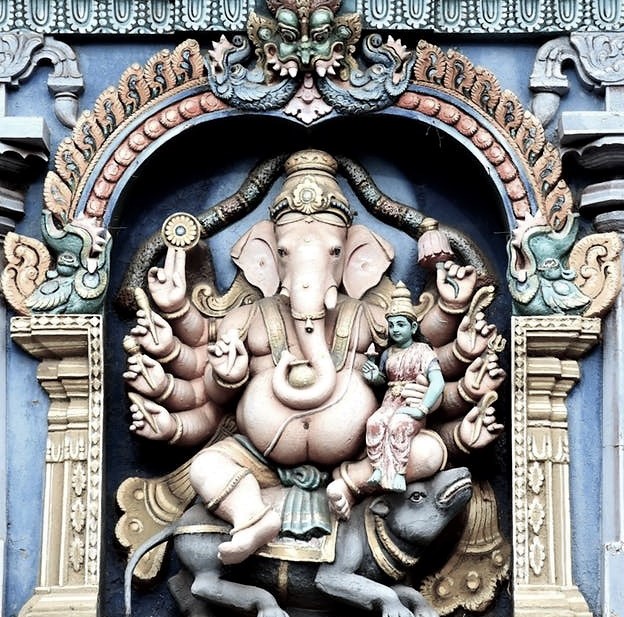- Special FeaturesFoundation Year7th centurySthala TreeTheerthamKsheera KundamRathamArchitectureDravidian ArchitectureOther SpecialityThe place is also called Tirukalavur, Mullaivanam, Mathavipuram and Garabapuri. Since Mathavi is the temple tree, it is called Mathavipuram (Mullaivanam); Karu means womb, Ka means save and oor means village - Since womb is believed to be saved by the temple deity, the village is called Tirukarukavoor. It is one of the shrines of the 275 Paadal Petra Sthalams - Shiva Sthalams glorified in the early medieval Tevaram poems by Tamil Saivite Nayanar Tirugnanasambandar Sundarar and Appar
- Sthala Puran
The temple has 31 inscriptions dating from the Chola period from the reigns of Koperi Varman, Raja Raja I, Rajendra Chola I and Kulothunga Chola. The inscriptions record the grants of the temple by the kings. The inscriptions are found on the walls of the temple, sanctum and also in the halls. The inscriptions are recorded in numbers 100, 102 and 110 in South Indian Inscriptions, Volume III, Part III.
- Architecture
Thirukarukavoor Temple is dedicated to Shiva and is located near Papanasam, Tanjore, Tamil Nadu, India. The temple has a 5-tier Rajagopuram and an outer prakaram(closed precincts of a temple). There are inscriptions from Cholas and king Koparakesarivarman. The temple is 460 ft by 284 ft and has a gopuram facing east and also has an entrance facing south. There is a garden in the southern side and a Vasantha Mandapam in the north. The sanctum of Mullaivananathar is in the second precinct and the shrine of Amman is located parallel to the Swami shrine. The shrine is Nandi is located in front of Swami, with the Palipeeda and Dwajasthambam located right behind the Nandi. There is a Nataraja hall and a yagasalai. There are separate shrines for Natarajar, Somaskanda, Karpaga Vinayagar and Navagrahas. There are separate shrines for Sezhkizhar, Nalvar, Santhanachariar, Dakshinamoorthy, Nrithivu Nayakkar, Arthanariswarar, Mahalakshmi, Arumugan, Brahma, Durga and Chandikeswarar. There are four water bodies associated with the temple. Sheerakundam (Parkulam) is the temple tank located opposite to the temple and the water is believed to be born out of the milk of Kamadenu, the sacred cow. Sathyakupam is a well located in between the shrines of Swami and Amman. Brahma Theertham is a tank located north east of the temple - Nataraja gives theerthavari during Karthigai Thivatharai in this tank. Vritha Kaveri is the branch of Kaveri, Vettaru (also called Mullivay) - the stepshore is the bank for many of the temple occasions. The temple tree, Mullai tree is located in between the Swami shrine and Chandikeswarar shrine.
- Alankar of Deity
- Prayers and BenefitsSpecial Vratas and PrayersOfferings to DeityStotras and Mantras
- FestivalsVaikasi Visagam for Swami, Adipooram and Navarathri uthsavam for Ambal, Annabishekam, Kanthasashti, Karthigai Mahadeepam, Karthigai Sunday theerthavari and Panguni Uthram are some of the prominent festivals celebrated.
- Sodasha Upcharas
- Prasadhas
- Social ActivitiesAnnadhanMarriageEar BoringHead ShaveDanaasEducation FacilitiesSocial DrivesOther Activities
- Arjita Seva
- Tags

